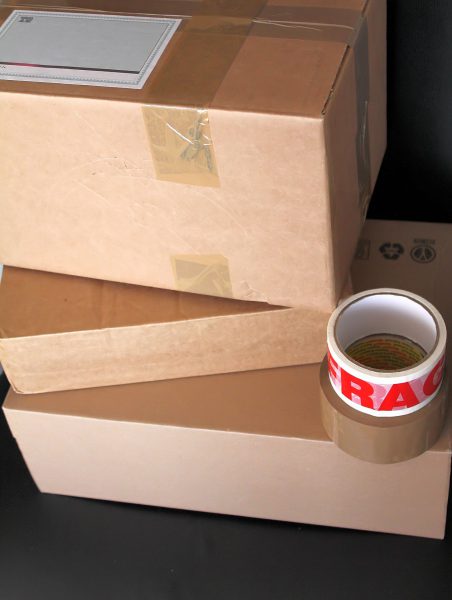5 Ways to Improve Your Warehouse Shipping Processes

Prior to working at ShipWorks, I worked for an e-commerce focused bedding store that sold a variety of bed frames and bed center supports online. One of my duties was to process new orders, pulling bed frames from our warehouse and preparing them for shipments. During my time there, my colleagues and I implemented several processes to help improve warehouse efficiency.
1. Streamlining your Box Sizes

When receiving an order for an item that didn’t come individually boxed, we would pull the product and run to a box pile. This pile was full of boxes previously sent to us, often worn and torn. If the box wasn’t a close fit, we would cut and fold the box down and then tape it over to save on dimensional costs. This was a sloppy process for a few reasons. First, digging through box after box to try and find the right size is a nightmare. It takes a lot more time than it should. On top of that, the box looks sloppy and is not a good representation of your company. Pulling off old labels, striking through other company’s logos, and adding additional tape just to keep the box’s integrity together is not an ideal look. Lastly, cutting the box down to the correct size takes even more time and looks even worse. Not a good situation overall.
Ultimately, we decided to streamline the process for our image, as well as, efficiency. So, we measured all our items and narrowed it down to 4 different package sizes. Three of those packages were boxes and one of those was a padded envelope. These different sizes provided us with enough flexibility to quickly package shipments. Most importantly, our products arrived to our customer, in much better condition, which was the primary end goal.
2. Implementing Shipping Software
 We started off using UPS World Ship for all UPS Shipments. We tookSmaller packages to the local post office and paid retail rates for our shipments. Copying and pasting addresses, manually sending emails, and standing in line at the post office equals a lot of wasted time and money. Shipping software helped automate all of these processes.
We started off using UPS World Ship for all UPS Shipments. We tookSmaller packages to the local post office and paid retail rates for our shipments. Copying and pasting addresses, manually sending emails, and standing in line at the post office equals a lot of wasted time and money. Shipping software helped automate all of these processes.
Address validation stopped us from shipping to the wrong address, which was always a costly nightmare. No more copying and pasting addresses into the software, the orders from our WooCommerce store connected directly into our software. A few clicks of the mouse, we had shipping labels printed and emails with tracking information sent. This saved an inordinate amount of time, eliminated the bulk of our user errors, and automated most of our shipping process.
3. Using High Quality Tape/Tape Dispensers

While this may seem silly, it makes a huge difference for the employees packing the boxes. During my time shipping, I have used a variety of tape dispersers from stationary to tape guns. Tape guns provided me with the flexibility to move around the warehouse instead of being stuck in one spot. On top of that, it seemed to apply to the box with greater ease.
Using a higher quality tape saves time and money. Instead of having the tape wrinkle up or tear while applying it, the better tape improved stickability. I used the Uline S-511, which was industrial strapping tape that included glass filaments. This tape was strong and durable, greatly reducing our shipment claims and speeding up our shipment processing time.
4. Creating Shipping Workstations
A shipping workstation is a must for any workplace. In our shipment workstation, we had an elevated table with bins full of commonly used supplies. These supplies included printer, extra labels, boxes, envelopes, bubble wrap, air pillows, markers, extra packaging tape, and extra tape guns. Not to mention our computer and scanners, connected to our shipping software. Keeping a well-stocked and meticulously organized workstation is essential to maintaining speed, accuracy, and efficiency.
It’s important to layout your station and all supplies in the order of use. It’s best to assign and area
5. Implementing an Inventory/Warehouse Management System
Two systems that already exist are SkuVault and Fishbowl. Both systems offer a pick, pack, ship software, which will allow you to efficiency make sure you’re correctly packing orders. These systems not only make sure your warehouse staff is picking the right product, but it helps better control your inventory.
These types of software are a must, especially if your company is doing flash sales or daily deal sites. Pick lists with the location of the product make sure the right product is being pulled, every time. This helps improve marketplace scores and marketplace oversells. It is of upmost importance to have a grasp on your inventory.
[button link=”https://www.shipworks.com/”] Improve Shipping Today![/button]
About the Author:
 Joe Reynolds is a Business Development Representative at ShipWorks, responsible for educating new customers on how to automate existing shipping procedures. In this role, Joe works closely with new customers and ShipWorks technology partners.
Joe Reynolds is a Business Development Representative at ShipWorks, responsible for educating new customers on how to automate existing shipping procedures. In this role, Joe works closely with new customers and ShipWorks technology partners.
Joe has over 4 years of e-commerce shipping experience, bringing great value to new and existing customers. His main responsibility is to help save customer’s time and money by overhauling their current shipping processes.